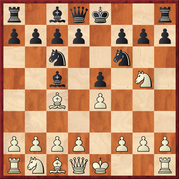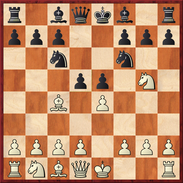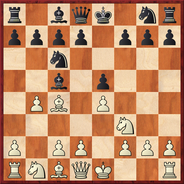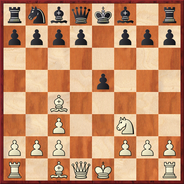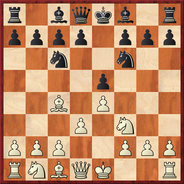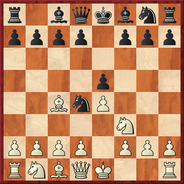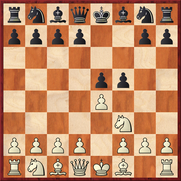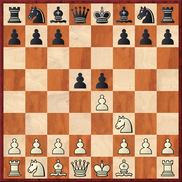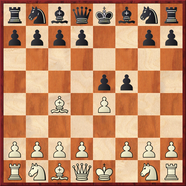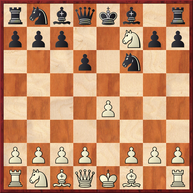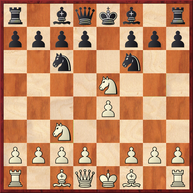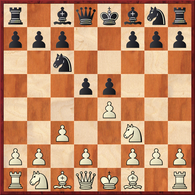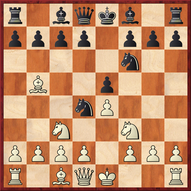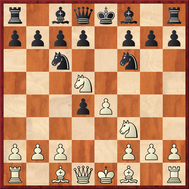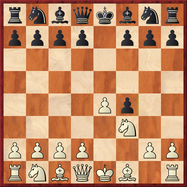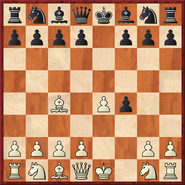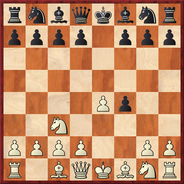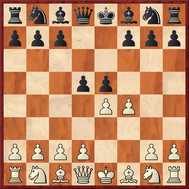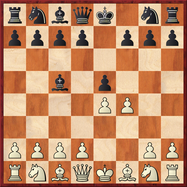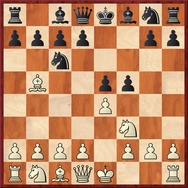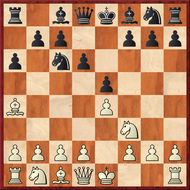This is a list of the lines that I intend to have covered by the end of 2020 (some already have coverage, but it is set to be updated).
Index of lines after 1.e4 e5, with an early d4
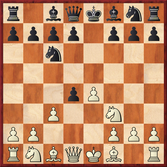
Göring Gambit - 1.e4 e5 2.Nf3 Nc6 3.d4 exd4 4.c3 (or 2.d4 exd4 3.Nf3 Nc6 4.c3) The Göring Gambit with 4...dxc3 5.Nxc3 is quite dangerous and probably fully sound, while sacrificing a second pawn with 5.Bc4 is more dangerous, but of more marginal soundness. White typically aims to develop quickly and launch a quick attack against f7, Black's main weak point. Regardless of its objective soundness, White's practical chances and results in the accepted lines of the gambit have proved pretty good. Black can, however, equalise quite easily by declining it with 4...d5, often leading to "isolated queen's pawn" positions with White relying on piece activity to compensate for having an isolated pawn on d4. 4...Nf6, 4...Nge7 and 4...d3 are other decent ways of declining, but are less likely to give Black full equality.
|
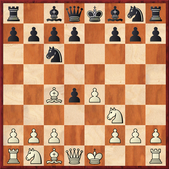
Scotch Gambit - 1.e4 e5 2.Nf3 Nc6 3.d4 exd4 4.Bc4 (or 2.d4 exd4 3.Nf3 Nc6 4.Bc4)
Includes coverage of the Two Knights Defence with d4 (after 4...Nf6) and the Giuoco Piano with d4 (after 4...Bc5 5.c3 Nf6). After 4...Nf6 5.0-0 Bc5 6.e5 we have the Max Lange Attack, but Black can deviate with the fully adequate 5...Nxe4. The Scotch Gambit is definitely sound, but does not promise a theoretical advantage. Play can transpose into Göring Gambit lines if White follows up with c2-c3 on the 5th or 6th move, and Black replies with ...d4xc3, but Black's most critical responses to the Göring can be side-stepped (e.g. 4...Bc5 5.c3 dxc3 can be met by 6.Bxf7+ intending 6...Kxf7 7.Qd5+ and Qxc5, and 4...Bb4+ 5.c3 dxc3 can be met by 6.0-0 or 6.bxc3). Black can equalise by transposing into the aforementioned Two Knights and Giuoco Piano lines. |
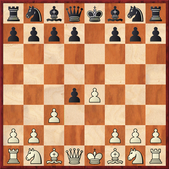
Danish Gambit - 1.e4 e5 2.d4 exd4 3.c3
This can transpose into lines of the Göring Gambit after Nf3 and ...Nc6, but there are some independent lines. In general I don't think the Danish move order is as strong as Göring's version with the knights out, as for example 3...Qe7 and 3...Ne7 are both much stronger than they are with Nf3 and ...Nc6 inserted. Also, if White tries the second pawn sacrifice with 3...dxc3 4.Bc4 cxb2 5.Bxb2, 5...d5 is fully playable, aiming to give back one or both of the sacrificed pawns, whereas with Nf3 and ...Nc6 inserted, playing ...d5 makes far less sense because e4xd5 hits Black's knight on c6. On the other hand, there are certain lines where White may benefit from having the option of playing Ng1-e2 rather than Ng1-f3. |
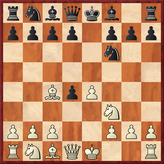
Urusov Gambit - 1.e4 e5 2.Bc4 Nf6 3.d4 exd4 4.Nf3 (or 2.d4 exd4 3.Bc4 Nf6 4.Nf3, or 2.d4 exd4 3.Nf3 Nf6 4.Bc4).
The Urusov Gambit appears to be fully sound and quite dangerous. White's idea is that after 4...Nxe4 5.Qxd4, White can quickly develop and put pressure on the black kingside, and Black has to be wary of playing ...h7-h6 and castling kingside because of the strength of various Bxh6 sacrifices. After 5...Nf6, White should play 6.Nc3 followed by 7.Bg5, as 6.Bg5 is well met by 6...Nc6 intending 7.Qh4 d5. With good play Black can reach equality, whether accepting the pawn with 4...Nxe4 or transposing into "Two Knights Defence with d4" lines with 4...Nc6, which I cover under the Scotch Gambit. |
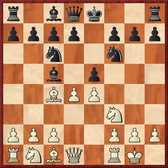
Max Lange Gambit - 1.e4 e5 2.Nf3 Nc6 3.Bc4 Bc5 4.0-0 Nf6 5.d4. This gambit can transpose into the Max Lange Attack after 5...exd4 6.e5 (which I cover under the Scotch Gambit) while avoiding the anti-Lange lines with ...Nxe4. Black's main alternative is 5...Bxd4 (not 5...Nxd4?! 6.Nxe5!), but White gets long-term compensation following 6.Nxd4 Nxd4 7.f4 or 7.Bg5. It appears to be reasonably sound as well as quite dangerous, but Black can equalise with good play. With this move order White needs to have something ready against 4...d6, after which 5.d4 is less effective, and White may well be better off reverting to a more positional approach with d2-d3.
|
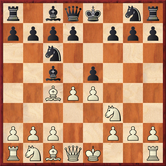
Italian Gambit - 1.e4 e5 2.Nf3 Nc6 3.Bc4 Bc5 4.d4. Advocated by Jude Acers and George Laven in their repertoire book The Italian System and a Guiding Repertoire for White. This move order avoids the possibility 4.0-0 d6, but it does give Black some additional options. 4...Nxd4 may be playable in view of 5.Nxe5 Qe7, taking advantage of White not having castled yet, while 4...exd4 transposes to the Scotch Gambit with 4...Bc5. 4...Bxd4 often transposes into Max Lange Gambit lines with 5.Nxd4 Nxd4 6.0-0 Nf6, but White has the interesting alternative 6.Be3, while after 6.0-0 Black has the deviation 6...d6.
|
Index of lines after 1.e4 e5 2.Nf3 Nc6 3.Bc4 (or 2.Bc4) without an early d4
Index of other non-Ruy Lopez lines after 1.e4 e5 2.Nf3
Index of lines after 1.e4 e5 2.f4 (King's Gambit)
Sometimes White plays for a delayed King's Gambit via the Vienna Game, 1.e4 e5 2.Nc3, intending 2...Nc6 3.f4, whereupon best play for both sides is 3...exf4 4.Nf3 g5. I cover these lines via the King's Gambit move order 1.e4 e5 2.f4 exf4 3.Nf3 (King's Knight Gambit, below) 3...g5 4.Nc3 Nc6.
I haven't covered the Vienna on this site chiefly because of the line 1.e4 e5 2.Nc3 Nf6 3.f4 d5, which leads to very different positions.
I haven't covered the Vienna on this site chiefly because of the line 1.e4 e5 2.Nc3 Nf6 3.f4 d5, which leads to very different positions.
